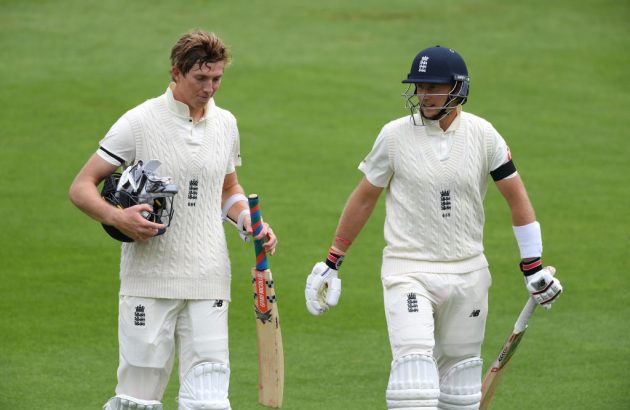Why Test cricket is back on Channel 4 and what it means for the future of sport on terrestrial TV

For the first time since the heady 2005 Ashes series, Test cricket is returning to British terrestrial television.
Channel 4 has bought the rights to show England’s tour of India, which begins on Friday in Chennai.
But why is cricket back on a free-to-air broadcaster? Who stands to gain? And what does this mean for the future of sport on TV?
Why is the cricket on Channel 4?
Channel 4 has been able to strike a deal because the rights are relatively cheap, in part due to some matches starting at 4am UK time, and offer more value to them than Sky Sports and BT Sport, says Julian Aquilina, senior TV analyst at media research specialists Enders Analysis.
“Sky and BT make money primarily through subscriptions, and so if this particular set of matches doesn’t attract new subscribers or make existing ones more likely to keep paying then it’s not necessarily worth their while to go into that market,” he said.
Sky hold the rights to England’s home series and could yet show the India tour, too; it is not known whether Channel 4’s deal with the Indian cricket authorities is exclusive.
Channel 4’s move is likely to be opportunistic rather than indicative of a tilt in strategy, says Neil Hopkins, global head of strategy at M&C Saatchi Sport and Entertainment.
“They’ve taken advantage of a situation that often arises when a broadcast contract comes up in the subcontinent: they’re not normally settled until quite near to the series itself,” he said.
The 4am starts, which apply to three of England’s four Tests in India, may even appeal to broadcasters like Channel 4.
“If you need to screen 7-8 hours of live cricket and you’re a terrestrial broadcaster then you couldn’t really think of a better slot to fill,” said Hopkins.
Why it makes sense for Channel 4
Terrestrial broadcasters’ trump card is their reach: Channel 4’s 2005 Ashes coverage attracted audiences of 8m.
That means advertising slots around their programmes are worth more than they would be on Sky or BT, increasing their chance of making a return.
“One of the interesting points will be the extent to which Channel 4 can monetise this themselves,” said Hopkins.
He adds that the broadcaster may be able to sell sponsorship of their coverage, too, albeit that it is at very short notice.
“Channel 4 will be able to attract a lot more advertising revenue than Sky or BT can, because it will generate larger audiences,” added Aquilina.
“Having a renowned public service broadcaster with a history of showing cricket, there’s definitely going to be a certain buzz around that.”
For these reasons, free-to-air coverage is a big hit with the brands that sponsor major sports properties.
Commercial partners will be paying particular interest to the extent to which they reach audiences beyond core cricket fans.
“That’s really important for a sponsor like NatWest, who want to reach the largest number of people as possible,” said Hopkins.
“They can do that because they’ve had such a presence in cricket over many decades. But it doesn’t half help to have terrestrial TV coverage boost that number by a factor of four or five.”
Is sport on terrestrial TV a trend?
This is not the first recent example of sport returning to free-to-air broadcasters.
Premier League football has been back on the BBC during the Covid-19 pandemic, with stakeholders conscious of the need to service fans who remain forbidden from attending matches.
English cricket’s newest property, The Hundred, meanwhile, will also be on the BBC when it starts later this year. Indeed, its unique 100-ball format was designed with broadcasters in mind.
There are other factors that could accelerate this trend.
“Sky has said it’s hoping to cut its costs in the sports rights arena and transfer some of that to original programming to compete with the likes of Netflix and Amazon,” said Aquilina.
On the other hand, the appetite from terrestrial TV has not markedly increased, he adds.

“It’s great for marketing but it’s a lot more difficult to know they’ll make a return just through advertising revenue.”
Chatter about a mass return of free-to-air sport reminds Hopkins of similar talk of Premier League broadcast rights declining in value.
“Have we seen that yet? Not really. As long as the value is still there, the likelihood that rights holders are going to decide they want to share their bounty with terrestrial broadcasters is not necessarily going to be the route forward.”
In rugby union, where private equity money is pouring in with a view to further commercialising the sport, there is likely to be less live action on terrestrial TV in future as subscription broadcasters are the surest way of maximising revenue.
Why The Hundred could be key
What could attract cricket and other sports back to free-to-air more regularly is a need to engage with new audiences and younger fans.
“A lot of people have called into question the long-term health of the sport if people are growing up and not becoming fans because it’s lacking from their viewing diet,” said Aquilina.
It is those concerns that have driven the thinking behind The Hundred, which will provide a useful gauge of terrestrial TV’s pulling power.
“There is very much the feeling within cricketing circles, whether they acknowledge it or not, that the decision to move everything onto Sky without even leaving a chink of daylight for cricket on terrestrial meant you lose momentum in terms of turning people onto the game, especially young people,” said Hopkins.
“The Hundred is going to be the real test case to see if there is a clear link between putting it on free to air and getting a new audience involved in sport. And a lot of sports will be watching to see how successful it is.”
